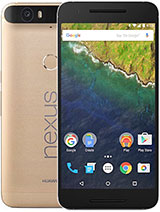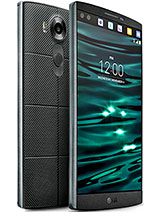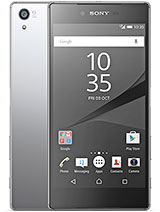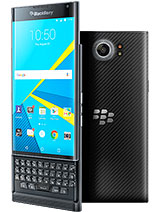GSMArena smartphone buyer's guide: 2015 Holiday Edition
2015 Holiday Edition

€500 and over
Let's throw caution and budget constraints out of the window and seek out the best mobile hardware you can find outside of research labs. Nothing but the most amazing phones will do here.
After a long, long wait, Microsoft finally unveiled new Windows flagships. The more compact of the two, the Microsoft Lumia 950 has a 5.2" AMOLED screen of QHD resolution and a Snapdragon 808 chipset. Why pay a premium over the Galaxy S6?
Well, the 20MP PureView camera with Carl Zeiss optics and optical image stabilization, plus triple LED light is highly impressive. Nokia (now Microsoft) really paved the way for high-quality mobile cameras, even their audio was leagues ahead (Androids are catching up though).
Windows 10 Mobile may be the less popular OS, but Microsoft's new Continuum puts a new spin on things. With the right adapter (given away in the US, €100 in Europe), you can get a desktop Windows experience. Sure, it's more Windows RT (that is no x86 apps), but it can really boost productivity when you have a full size keyboard and mouse. If you have them, unlike the Surface and other tablets, carrying a keyboard with your phone isn’t easy.

Microsoft Lumia 950 |
Pros | Cons |
|
|
|
|
| Review |
The bigger version, the Microsoft Lumia 950 XL, has a 5.7" AMOLED display of QHD resolution. It also bumps up the chipset to Snapdragon 810. Note that both Lumias have liquid cooling, a feature borrowed from the Surface team to keep the cores from over-heating.
Androids and iPhones rely on fingerprints for added security, but the Lumia 950 and 950 XL use Windows Hello, which uses an iris scanner instead. So, your face (eyes specifically) is your unlock code.
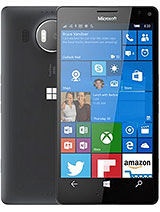
Microsoft Lumia 950 XL |
Pros | Cons |
|
|
|
|
| Review |
Still, if it's impressive camera you want, the big Sony Xperia Z5 brings the revamped Exmor RS shooter. It ups the screen to 1080p resolution – better than the 720p on the Z5 Compact, but still behind the competition – and the RAM to a more acceptable 3GB.
Unlike the others here, the Xperia Z5 has IP68 water resistance rating. It also has stereo speakers and a microSD slot going for it, plus Sony's good track record of updating Android on its flagships. The Z5 model has highly impressive digital image stabilization, much better than the one on the Z3+ and rivaling some hardware OIS implementations (you lose field of view, but the Z5 camera is very wide so it's not an issue).
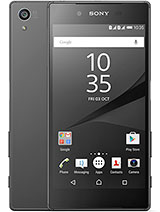
Sony Xperia Z5 |
Pros | Cons |
|
|
|
|
| Review |
| Screen | Contrast | Sunlight | Screen-to-body |
| 583 nits | 986:1 | 2.876 | 69.6% |
| Battery | Talk | Web | Video |
| 73h rating | 17:13h | 14:35h | 7:53h |
| Performance | CPU bench | GPU bench | Web bench |
| 2303 |
The Lumia 950 XL is an impressive device, but it has to beat the Samsung Galaxy Note5 for a place in your pocket. A 5.7" QHD Super AMOLED screen comes with a stylus, the familiar S Pen.
The Galaxy Note5 has the faster chipset, Exynos 7420, more RAM at 4GB, and Samsung's excellent multitasking interface, which the Lumia lacks (we're talking about multitasking on the phone itself). The camera is an improvement over the Note 4 camera. It's lower res than the PureView shooter, but has the same size pixels.
Like the Galaxy S6, this one comes with a great fingerprint reader and Samsung Pay with the ability to emulate magnetic strip credit/debit cards.
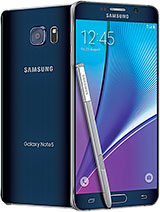
Samsung Galaxy Note5 |
Pros | Cons |
|
|
|
| Review |
| Screen | Contrast | Sunlight | Screen-to-body |
| 620 nits | ∞ | 4.090 | 75.9% |
| Battery | Talk | Web | Video |
| 85h rating | 28:34h | 10:43h | 13:51h |
| Performance | CPU bench | GPU bench | Web bench |
| 26281 | 2324 |
A very similar device is the Samsung Galaxy S6 edge+, except that, as its name suggests it has a dual-curved screen like the smaller S6 edge. Unlike the Galaxy Note Edge from last year, this one does not come with a stylus, so S Pen fans beware.
The Galaxy S6 edge+ plus does look prettier than the Note5, but as with the S6/S6 edge you're paying a hefty premium for looks and not much practicality.
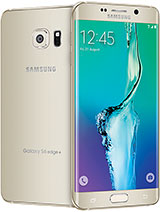
Samsung Galaxy S6 edge+ |
Pros | Cons |
|
|
|
| Review |
Yet another AMOLED screen comes with the Motorola Moto X Force package (aka the Droid Trubo 2 for Verizon in the US). It has a 5.4" QHD display and an impressive camera of its own – 21MP with phase detection AF and 2160p video, plus a 5MP selfie camera with its own flash.
The Moto X Force is billed as the Shatterproof phone and various drop tests confirm that the dual-pane glass on the front takes hitting the pavement like a champ. Note that the phone isn’t waterproof though.
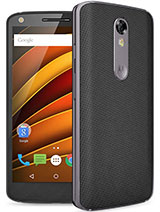
Motorola Moto X Force |
Pros | Cons |
|
|
|
Finally we reach Apple's smartphones. We passed by the iPhone 6 duo, but since you're paying top dollar (or euro or whatever) you may as well get the latest model.
The Apple iPhone 6s is one of the few remaining top-specced compact phones, even if it is not Xperia Z Compact compact. The all-aluminum body has its fans and Apple upped the horsepower – you get one of the very best mobile chipsets with more RAM than before and the camera finally jumped on the 2160p bandwagon.
The new 12MP camera produces higher-resolution stills though we found out the improvement in image quality isn’t quite 50%. The video got a big boost though (yet still no stereo sound). Apple introduced Apple Pay, its own payment service that has the widest coverage of the three competing services (Samsung and Android being the other two).
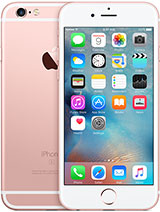
Apple iPhone 6s |
Pros | Cons |
|
|
|
| Review |
| Screen | Contrast | Sunlight | Screen-to-body |
| 536 nits | 1481:1 | 3.783 | 65.6% |
| Battery | Talk | Web | Video |
| 62h rating | 9:41h | 12:27h | 10:46h |
| Performance | CPU bench | GPU bench | Web bench |
| 2195 |
The Apple iPhone 6s Plus is Apple's second generation phablet. It has a notably sharper 5.5" screen (though still no match for the QHD crowd). The screens of both the 6s and the 6s Plus have Force Touch – the ability to measure the pressure on the screen and respond accordingly, a right click of touchscreens. Some Android makers have been quick to adopt this new feature.
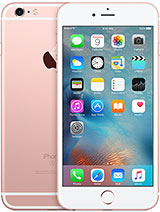
Apple iPhone 6s Plus |
Pros | Cons |
|
|
|
|
| Review |
| Screen | Contrast | Sunlight | Screen-to-body |
| 590 nits | 1382:1 | 3.530 | 67.7% |
| Battery | Talk | Web | Video |
| 85h rating | 15:51h | 11:51h | 13:57h |
| Performance | CPU bench | GPU bench | Web bench |
| 2261 |
What didn’t make the cut
The Huawei Nexus 6P is easily the best Nexus so far, but again we skipped it due to the ridiculous pricing policy outside of the US. It's the first all-metal Nexus and it has a great 5.7" QHD AMOLED screen, proper stereo speakers too (unlike the LG). It also upgrades to a Snapdragon 810 chipset.
The new camera is amazingly good in the dark and you get an 8MP/1080p selfie cam. It's a great device (not counting the lack of a microSD slot). It's around the same price as a Galaxy Note5, so it's certainly not out of reach, but it should have been cheaper.
The new LG V10 is a pretty unique device. Its dual-screen enhances notifications, giving much more detail than a simple status LED. The dual selfie camera is pretty interesting too, though having seen 13MP cams with their own flash, its wide-angle lens (120°) doesn’t quite make up for the 5MP resolution.
The camera is very good, using the LG G4 hardware with some bespoke features and the most extensive set of manual controls. The problem is that the LG G4 will be updated with these features too and it's much, much more affordable. The rubbery back on the V10 is there for extra durability (the phone is built to withstand falls), but the leather back on the G4 feels more premium despitebeing actually cheaper.
If you thought QHD was impressive, wait till you hear about Sony's 4K display. The Sony Xperia Z5 Premium has a 5.5" display with as much resolution as your 55" 2160p TV. It mostly works in multimedia apps though, the rest of the time the UI is rendered at 1080p and upscaled. That doesn’t quite justify the price premium over the regular Z5, which has essentially the same specs.
HTC tried to revive its ailing business with the HTC One A9, a new direction in design for the company. It draws comparisons with the iPhone, even though HTC argues this is actually their design and Apple borrowed from them.
In the US, the A9 was basically at the same price as the Nexus 5X, but offers a 5" 1080p AMOLED display, and a 13MP camera with OIS. The midrange Snapdragon 617 chipset is a deal-breaker though, it can't even do 2160p video. And in Europe its pricing is nothing short of outrageous, which is the reason this otherwise fine phone wound up in Also ran category in this price range.
We made it all this way without BlackBerry, so let's close on one. The new BlackBerry Priv is unique in several ways – it's BB's first Android phone and it's the first Android, strike that, first high-end smartphone to come with a slide-out hardware QWERTY.
The Priv is built to heavy-weight specs. It has a 5.4" AMOLED QHD screen and an 18MP camera with Schneider-Kreuznach optics, OIS and phase-detection autofocus. It's powered by an S808 chipset like the LG V10.
It's very expensive though, rivaling even the iPhones and the BlackBerry-infused Android isn’t quite ready for prime time yet.
Reader comments
- radosuaf
- 01 Apr 2016
- 0m1
Where is the up-to-date guide? :)
- Solun1
- 07 Feb 2016
- pYu
Galaxy Note 4 - disadvantage is "some concerns over build quality"? What? It´s the best crafted phone of 2014.
